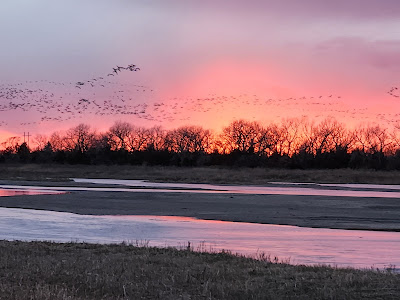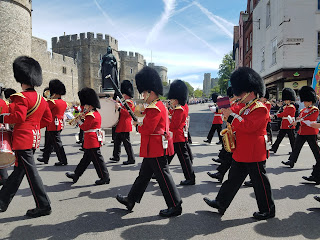The Great Crane Migration - Sandhill Cranes in Nebraska
I had this trip to Nebraska planned for several months, and I was really looking forward to it after being cooped up all winter. I think cranes first entered my consciousness after I spent a couple hours at the International Crane Foundation in Baraboo, Wisconsin on a road trip to Cleveland. And then a friend mentioned the Sandhill crane migration that goes through the Platte River region in Nebraska in March/April. It sounded amazing. I just needed to start planning; the weather in this region in March can be horribly unpredictable, would I run into a snowstorm or would it be dry and blue skies? Turns out it was a little of both. Just a few days before I started out, there was a major snowstorm in Nebraska, which made me nervous, but I had great weather.
There are a few different ways to see the cranes and probably the best way is to connect with one of the conservancy groups that does educational work on the cranes and the diverse wildlife on the Platte River. They offer spots in their blinds for a pretty reasonable cost. I booked two sessions with the Iain Nicholson Audobon Center at Rowe Sanctuary, one in the early morning and one in the early evening. I also found a bus tour that meets up at different spots in Nebraska, drives to Kearney and makes stops along the way. I just didn't like the idea of doing this activity with 20-30 people when I could easily do this on my own, but it's nice to know that it's an option. You can also drive along the river and pull into parking lots that have views of the river and potential landing spots, and as you drive around Kearney and Gibbon, you can see the cranes in the fields, filling up for their long flight back to their northern homes.
When you get to the Center at 5:30 am or so, it is pitch dark, you can see the stars so clearly without the light pollution you get in the city, and they don't have regular lighting, they use red lights which don't impact the birds, and as you walk out to the blind, you rely on little red flashlights to sort of light the way. They don't have paved paths to the blinds, but I think they can provide limited accommodation if there are mobility issues. It can also be really, really cold. Remember, it is March in Nebraska, and it can be a damp cold that goes right through you. I had multiple layers on and was pretty comfortable.
 |
| After daybreak |
 |
| In the fields |









Comments
Post a Comment